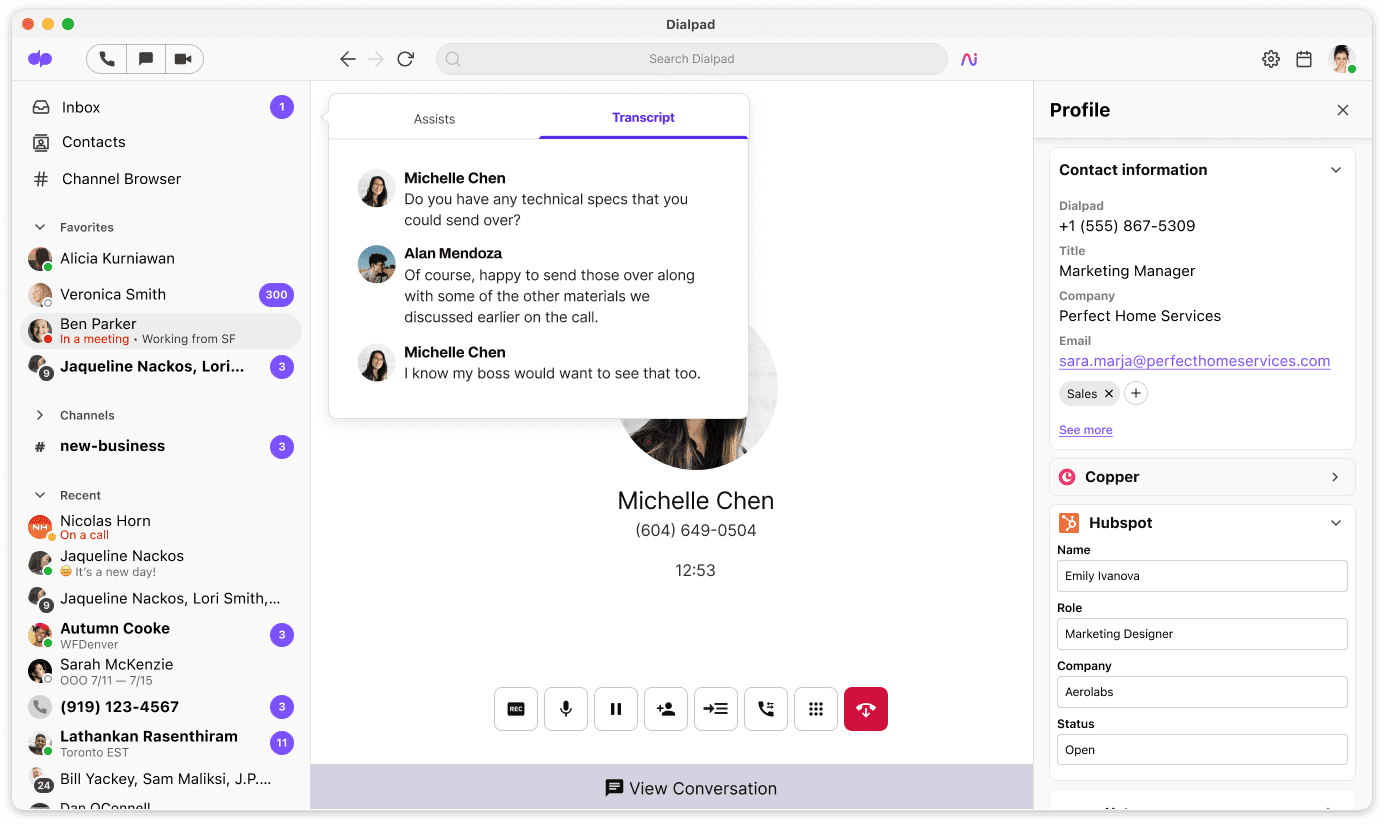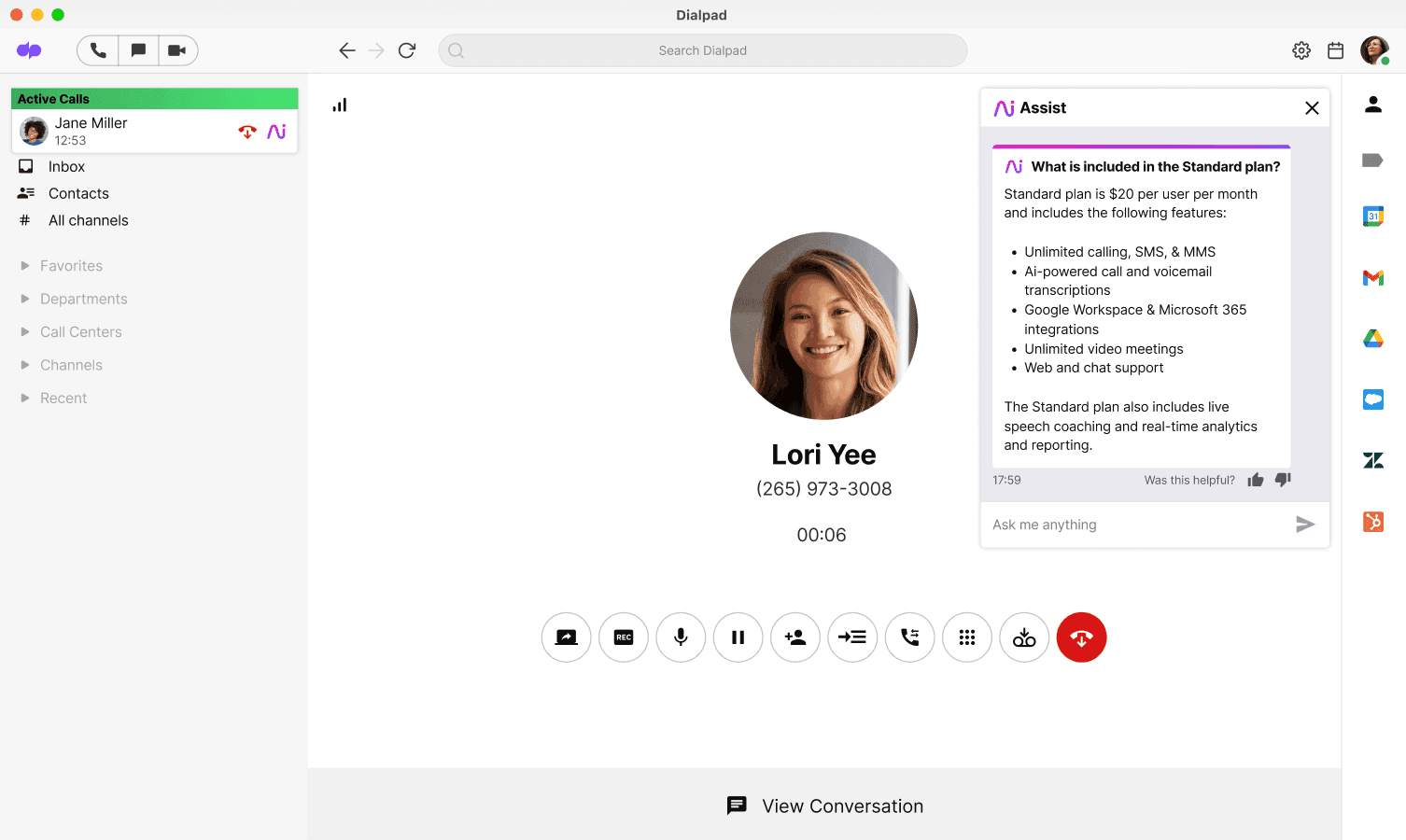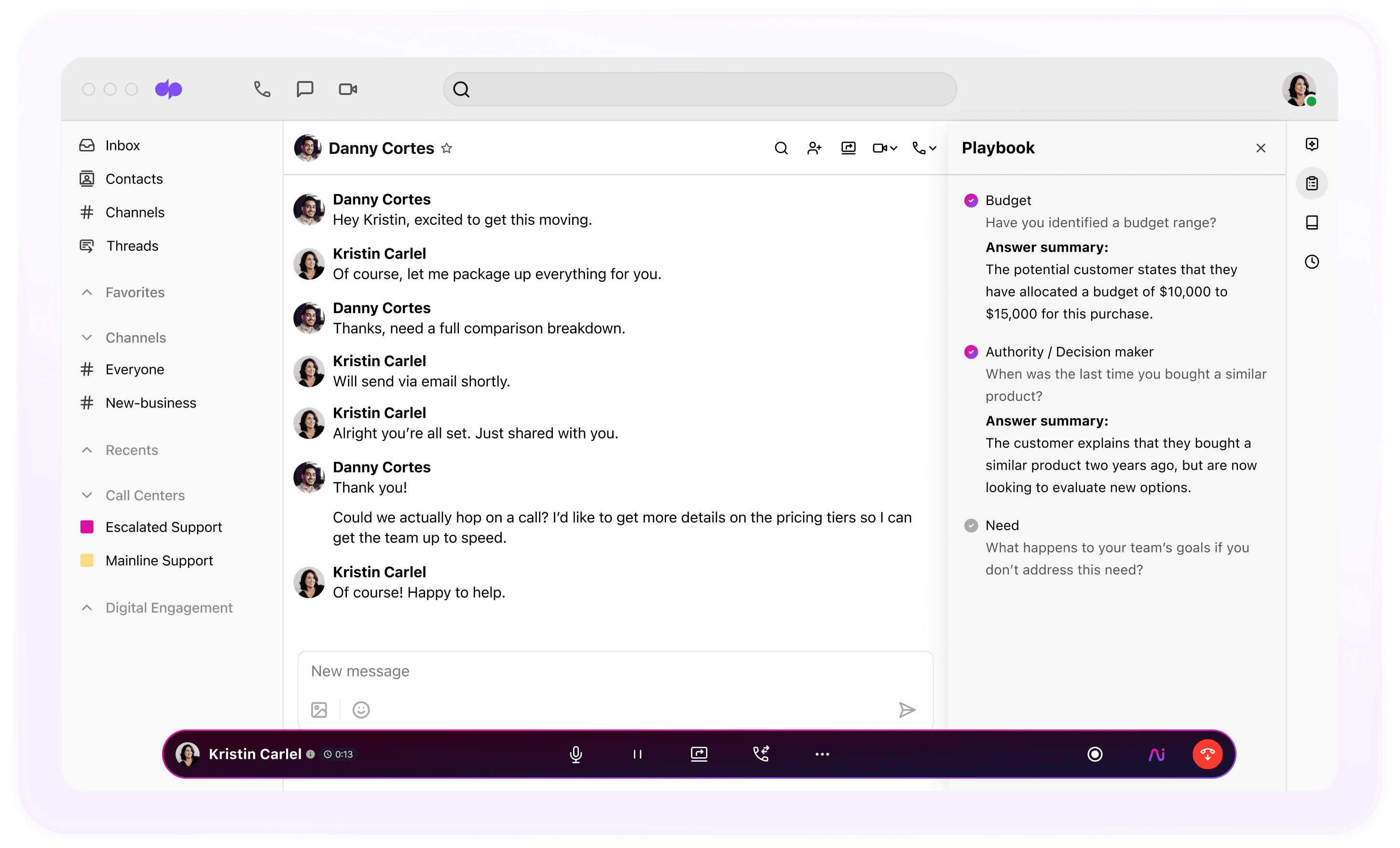The ultimate guide to conducting a perfect discovery call + a template to get you there faster

Regional Vice President of Sales

Tags
Share
Whether you have yet to make one or you’ve been making them for years, the classic discovery call is both vital and more than a little intimidating.
That’s why we’ll be exploring the best ways to approach discovery calls. We'll delve into the reasons discovery calls matter so much and give you some winning tips to get you started. Plus, we’ll provide you with a free template.
What is a discovery call?
A discovery call, or discovery sales call, is a phone-based conversation between a salesperson (usually an account executive) and a potential customer. It’s the first such conversation between the two parties.
The call is when prospects start learning all about the product your company sells. It’s also—crucially—when you discover whether they’re a good fit for your company.
If they match your criteria, you can then start to move them into your sales funnel proper and work on turning them into a paying customer. If they don’t, you can disqualify them, and this is an important step, too.
The benefits of effective discovery calls
Sales discovery calls are incredibly valuable for your company if done right. The following are just some of the things they accomplish:
Qualifying leads
A key purpose of discovery calls is to qualify leads and determine what your approach will be when it comes to converting them into customers.
Since discovery calls are extended conversations between account executives and leads, they represent the perfect opportunity to determine whether a lead is going to be worth investing in.
Just as leads learn about your products and company, you can compare them to your ideal demographic and determine whether they fit in. You can also find out more about promising leads that will be useful later in the sales funnel.
Disqualifying non-leads
A well-optimised sales cycle involves moving suitable leads along the sales funnel until they’re ready to make a purchase, then continuing to nurture them so they become lifelong customers.
The key word is “suitable”, because not every customer will fit your criteria.
Some customers just aren’t interested. Others have so many qualms that it would be difficult to justify pursuing them if there’s a good chance they’ll never buy, or leave once they do.
This is why discovery calls’ potential to disqualify leads that simply aren’t suited to your company is also so valuable.
Making a connection
Where a cold call or qualifying call would be shorter, discovery calls can last for quite a long time. This makes them the right tool for establishing a strong connection between your brand and its customers.
Crucially, this process of connecting is about more than just providing as much useful information as possible. It’s also about listening in return.
What you’re doing by joining potential customers on discovery calls is putting down the foundations of a relationship and showing them what the human side of your brand looks like, which we’ll explore more below.
One thing that’s vital to making those relationship foundations as sound as possible is to demonstrate that you’re listening to, understanding, and remembering what your prospect is telling you.
Instead of manually noting down everything you need to remember, you can save time and effort with AI transcription. Dialpad Ai can create detailed, real-time transcriptions of your discovery calls:

Establishing your brand identity
Another huge benefit of good discovery calls is that they allow you to present your brand in exactly the way you want to your prospective future clients.
Is your brand serious or playful? Do you tend towards formal or casual language? What are your values? What kind of sense of humour, if any, does your company have?
These are the kinds of questions you can answer in the way you interact with your leads over the phone. How you present yourself will inform their impression of your brand.
That’s how discovery calls are an opportunity for your company to solidify its brand identity in the minds of future customers.
Free discovery call template + the right questions to ask during your call
Next, we’ll cover the basics of how to structure a discovery call. The following discovery call template will guide you on your way, and is structured into four subsections—one for each stage of your call:
Part 1: The opening
You’ll be setting the tone of the call during this initial stage. It involves reconnecting with a prospect, as you’ll likely have met them—or communicated—at least once before the discovery call.
Your goal here is to build up a rapport with the lead. Whether you do this by speaking to them as a fellow business professional, or in a more personal, friendly manner, what matters is that you’re fostering a connection.
Example phrases you could use at this stage of your discovery call
“Hi [Prospects Name], how are things? I saw about your company’s recent [relevant news item or press release], that sounds exciting.”
“Hi [Prospects Name], I noticed you [introduce an interest or hobby you’ve discovered your individual contact has]...”
“Hi [Prospects Name], how are you? Did you see the news about [something from current affairs or an industry-specific piece of news you know your prospect will be interested in]...”
Part 2: The pitch
This second stage is all about outlining the rest of the call, as well as setting expectations.
It’s called “the pitch” because outbound discovery calls need to include a pitch of some sort, in which you draw the listener in with wonderful details about your product.
Inbound leads will already be interested to at least some degree, meaning you can wait a little longer before pitching to them. You’ll want to use this phase of the call to strengthen your connection with the lead and start to explore the ways in which your product can benefit them.
Either with inbound or outbound prospects, it’s not time to go into the deepest details yet.
Example phrases you could use at this stage of your discovery call
“We work with companies like [reference a business you’ve worked with in the prospect’s industry]. We’ve helped them to combat [detail a pain point your prospect may also share] by [explain how you helped the existing customer]”
“Thanks for reaching out to us [for an inbound lead]. It’d be great to get a better understanding of what you’re looking for and how we might help you. Shall we get down to some questions?”
Part 3: Questions
During this stage, your focus will be on asking the right questions to help both parties reach a greater understanding of one another. Everything you need to know about your lead, you should ask at this point.
At the same time, you’ll want to be ready for them to answer your questions with more questions. For example, if you’re asking what their budget looks like, they may return with questions about your payment plan options.
It’s very helpful to assemble a list of questions ahead of time. These should be crafted such that they help you assess whether your lead is a good fit for the product. They should also guide you towards explanations and tailored solutions in the next stage.
Example discovery call questions
“What kind of budget do you have for a [your solution]?”
“Have you considered how much money your business might save by adopting a [your solution]?”
“What’s the decision-making process at your company when it comes to investing in new technology?”
“How is the current process or workflow [that your product could help with] working at your company?”
“What are the main limitations of your current process or workflow [that your product could help with]?”
“Do you have a planned timeframe for implementation?”
Part 4: The close
By this point, you’re looking to decide if the lead is the right fit for your product and company. Regardless of your decision, be clear with your lead and let them know what led you to your conclusion.
If you’re sure they’d be a great fit, tell them as much and explore the reasons why your product is just what they’re looking for. Unless you’re sure the lead isn’t qualified, you should also arrange for a further meeting at this point. That way, you’ve got a timeframe for your next interaction.
Example phrases you could use at this stage of your discovery call
“Thank you so much for your time today. I think that [your product] would be a great fit for you, and that the [specific tier or plan] would really help you. How does that sound? Shall we go ahead and schedule a product demo to give you some more insight?”
“Thank you so much for your time today. I completely understand the challenges your company is facing. However, due to [specific reasons], I don’t think our product is going to be the best fit for you. If you’d like, I could suggest a few alternatives for you via email?”
How to run a discovery call: More tips for success
Having a robust discovery call template is a great first step. To take things up a level, here are some tips and best practices to make every call as worthwhile as possible:
Stay flexible
Perhaps the most important piece of advice is to remember that conversations can be very unpredictable. That means you’ve got to keep an open mind at all times, so you’re always flexible and ready for anything.
Even the best template can never cover every possible scenario. Your template should help and guide you, but it should not act as a rigid structure to force every last call into.
Technology can help here, too. For instance, Dialpad’s Ai Live Coach can help you answer prospects’ questions promptly and accurately.
When a particular keyword—say, a rival company’s name—comes up on the call, Dialpad Ai will recognise it and automatically search connected knowledge bases. Relevant information and potential answers to the prospect’s query will then pop up on screen

Study past discovery calls
One of the fastest ways to improve your discovery call skills is to watch those of others being used in practice. To that end, it’s a great idea to listen or read over past discovery calls and learn from them.
As well as giving you ideas of discovery question examples you can use to engage customers, you can identify other account executives’ strengths and weaknesses by experiencing their calls. This helps you understand what works well and what doesn’t.
By taking this critically analytical approach to calls that have already concluded, you can also train your mind to analyse your own discovery calls for cues and clues while they’re still in progress.
Stick to your chosen sales methodology
Okay, we’ve mentioned the importance of flexibility. However, if your organisation has settled on a particular sales methodology (BANT, MEDDIC, etc.), it’s important your discovery calls stick to the general principles.
Your company’s sales AI tools can help you with this. Dialpad’s Ai Playbooks feature, for instance, can prompt you with ideas, topics, or questions to keep a call on track.
Say, your company is committed to BANT qualification. Dialpad Ai can help by suggesting questions to cover each principal area of that sales framework (Budget, Authority, etc.):

What’s more, the Dialpad Ai Playbooks feature also helps check off and track adherence. So, if your call didn’t tick all the BANT boxes, it’ll flag this and show you where you need to improve in future.
Personalise the experience each time
Every one of your leads is unique, which makes it important to treat them as such. You can do this by personalising and tailoring every discovery call accordingly.
During your conversations, you’ll learn about your leads’ preferences and needs. It’s important to pay particular attention to these, so you can bring them back up later on as organically as possible. This helps show you genuinely care and value each lead as an individual.
It’s also important to go into each new discovery with a blank slate, so to speak. By consciously setting your knowledge of past leads’ preferences aside, you can create space for your new conversation partner to really let you know who they are and what they’re searching for.
Be patient
While every lead is bound to have their own unique perspective, you’re likely to encounter a lot of similar questions as you make more discovery calls. When you do, it’s important to exercise patience.
In all likelihood, you’ll be giving similar answers to a few basic questions many times. It’s important to remember, however, that each new lead will be hearing your answers for the first time. Each one should have an excellent first experience in this regard.
Additionally, you’ll want to give the leads time to think about what they’d like to ask you, or to digest the information you’re giving them.
Balance information quantities
As tempting as it might be to share all the information you have available about your products, it’s important to strike a good balance and exercise restraint.
You will, of course, be sharing plenty of details with prospective customers. One goal is to help them understand your product(s) and entice them into becoming a paying customer.
At the same time, however, you have to avoid overloading your leads to the point where they’re disinclined to keep listening.
Remember, your calls should be two-way conversations, rather than presentations. In a discovery call, you should act as a consultant, aiming to genuinely assess a prospect’s fit for your product. Keeping this in mind is crucial to the success of your discovery calls.
Ready to start running better discovery calls?
You’ve got your template and you’ve followed our list of best practices. Plus, you understand what the purposes of a discovery call are.
Remember that every discovery call is unique. That means that you can always take opportunities to learn more and improve, regardless of your experience level.
Dialpad Ai makes it easier for our own sales team to learn from past calls. Between built-in call transcription tools, a handy call summary feature, and much more, its unique sales AI functionality gives you all the support you’ll want to start turning every discovery call into a fantastic opportunity for forging stronger connections. See how it works now!
See how we use Dialpad to book more meetings
Book a demo of Dialpad's AI-powered sales engagement platform, or take a self-guided interactive tour of the app on your own!
